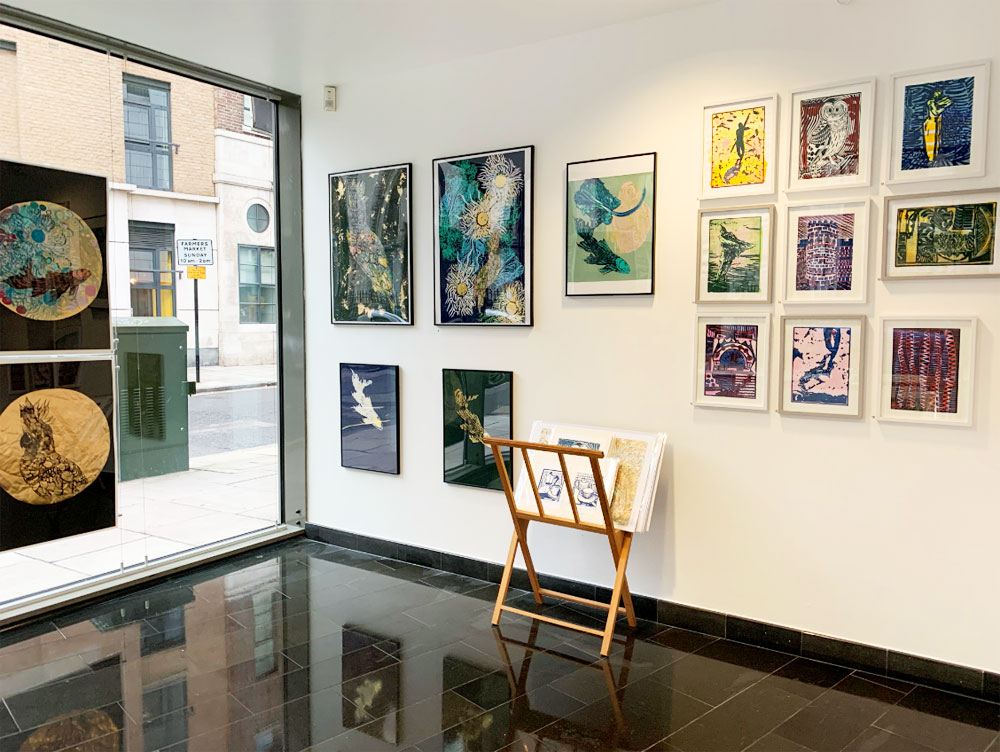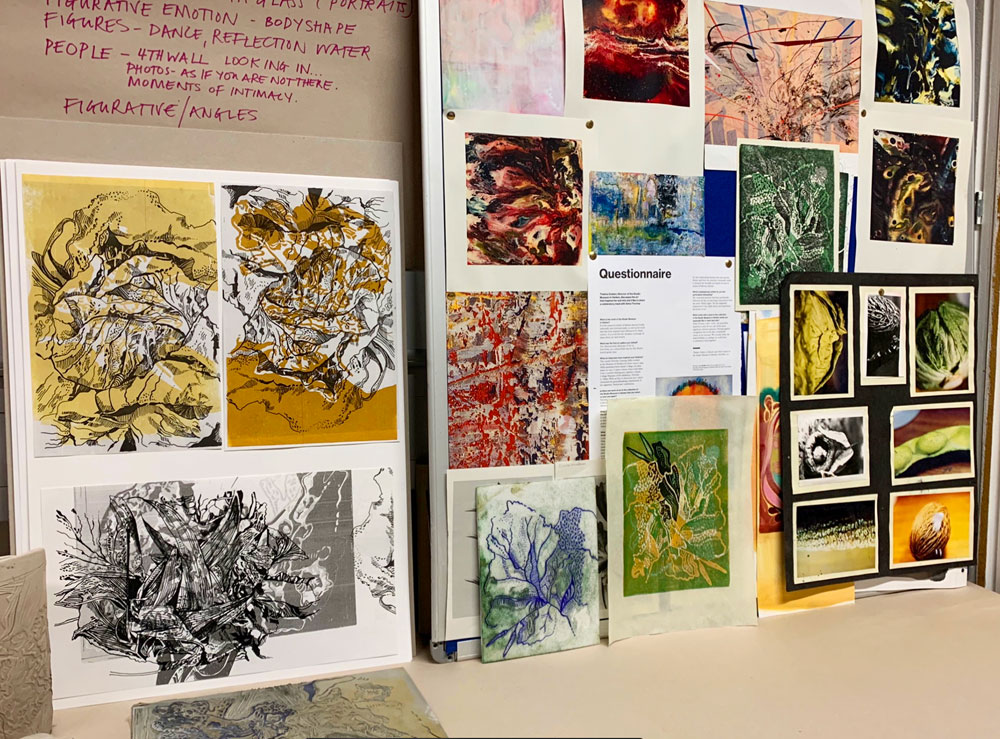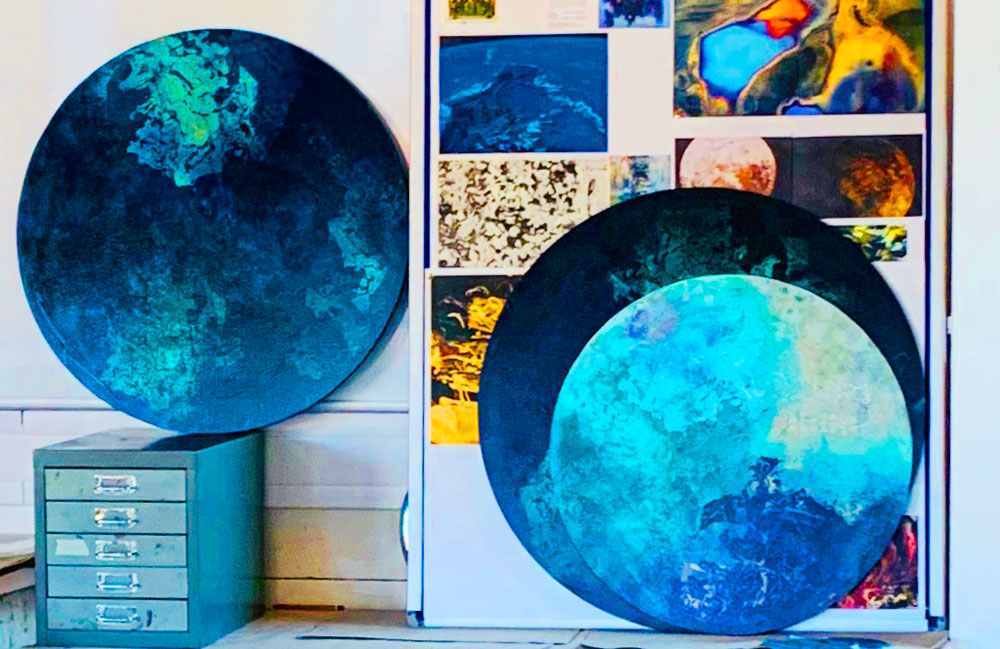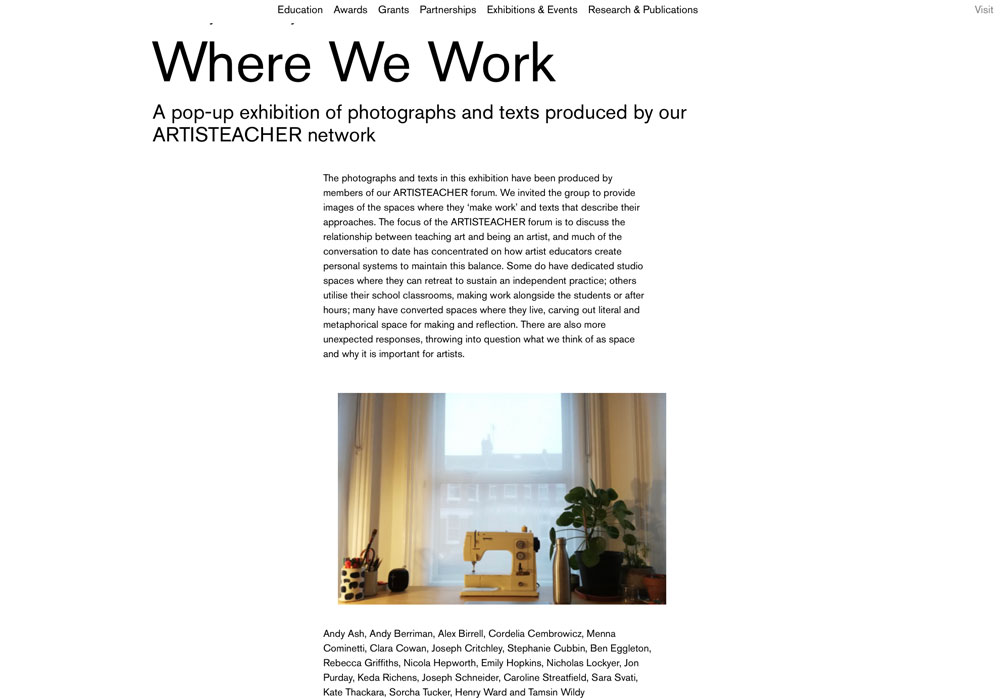Stephanie Cubbin reflects on her dual role as an artist teacher, and the benefits of her artistic practice for herself as a teacher, her students and colleagues.
 The beginning
The beginning
For the first few years of teaching, the idea of having time to make your own work seemed impossible. With lesson planning, assessment and the pressures of the workload, my own practice was never quite important enough. I’d say it was three years before I could embark on a new year without having to plan everything and then I found myself taking on more responsibilities, whole school and department-wide, the art practice took the back burner.
It was a slow realisation, as I became involved with a large scale project with the Serpentine Gallery, that I needed to invest back into my own artistic practice, and signed up to a Masters Degree. The first unit was based in the studios and was practice-based, I’d forgotten what my own areas for development were, and started a period of self-reflection and investigation. I was a student again, vulnerable, nervous about making errors and not always finding the path easy. I was reminded about what it feels like to be on the other side of the classroom, and it influenced my teaching an extraordinary amount.
Post the MA, the idea of learning alongside students was a thought that lingered on. With department colleagues we decided to start a sketchbook circle and swapped the sketchbooks each term, adding drawings, paintings and small scale experiments. Often I would work alongside my students and they would ask what I was doing. It would spark conversations about materials, discoveries and ideas. Sometimes I worried if I was influencing them too much? Was I taking them away from their own journeys? On reflection, I decided that we all are influenced by those surrounding us, and that I am no more of an influence than any of the other students in the room.
A little later, I chose to take a small display board and hang it near my teaching computer (the spot that I mostly start from in the lesson) and pinned up all my resources, artist images, collecting, and photos. The students could see the build-up of my ideas and make connections between that and the work that they had been set. They could see it was a part of an artistic journey and not just exam criteria. Again it helped teaching; I could explain that some images were easy to find, others took much longer, some I have been holding onto for 20 years... that the habit of collecting imagery was really important to the creative journey.

The space grew and grew, and each time the students were printing, I was printing alongside them. When they painted, I painted and I made mistakes, got annoyed, and we discussed strategies in how to get through difficult moments. Some times students have said that my ability to draw and paint makes them feel vulnerable - we all feel that way at times.

Impact on teaching and learning
An instrumental moment was the moment of a painting disaster. I had made a layer of painting that did not work, and without thinking took the board to the sink and ran it under the tap. The effect of the water partly washing off layers of paint was very pleasing, the students had all agreed too. We accidentally discovered a technique that we liked through a mistake.
We, as art teachers try to create an environment in which real experimentation and risk-taking can happen. Modelling it was a good way for students to see that calculating risk is fundamental to making art. Risk is important as part of the experimentation and development process, but the students need to understand that it's not necessarily good at the final exam piece stage though, they should know, with confidence, that the work they will be doing has been tried and tested.
They can see this happen through their artist teacher. It was also important to see work being finalised and exhibited.
We now have established an annual staff show in our small gallery space, with a private view. The exhibition is open to any art staff that choose to exhibit and they can sell their work if they choose to.

I firmly believe that the best subject-specific career professional development that an art teacher can have, is one where they can explore their own practice, including the teaching or socially engaged art as an artistic practice.
As a head of department I am encouraging practice development through:
1. Developing own practice as a part of their appraisal target if they choose to (this comes with a small budget from Art capitation to help pay for materials or a course).
2. An annual staff exhibition in the school gallery space, with a preview night in which staff can sell their work if they choose to.
3. Department INSET time devoted to making, sharing own work and ideas.
4. The department blog featured art teachers workspaces.
ARTISTEACHER is a regular forum that meets every half term at Freelands Foundation to support art teachers and educators to engage with their practice and to explore the principle of teaching as artistic practice, as well as enabling them to work collaboratively to share projects and develop new ideas. This started after a discussion on our developing sculpture project, in which we (all art teachers with our own practice that underpinned teaching) all wanted more opportunities for crits and reflection.
Just before lockdown, we had an exhibition of our studio spaces, as part of a dialogue in ‘what is practice and where can we work?’

In my experience, teachers who have their own practice are happier, productive, and get great results from their exam groups. This is not time wasted, but a highly professional and impactful resource for teaching and learning.
This is a sample of a resource created by UK Charity AccessArt. We have over 1500 resources to help develop and inspire your creative thinking, practice and teaching.
AccessArt welcomes artists, educators, teachers and parents both in the UK and overseas.
We believe everyone has the right to be creative and by working together and sharing ideas we can enable everyone to reach their creative potential.
 The beginning
The beginning

